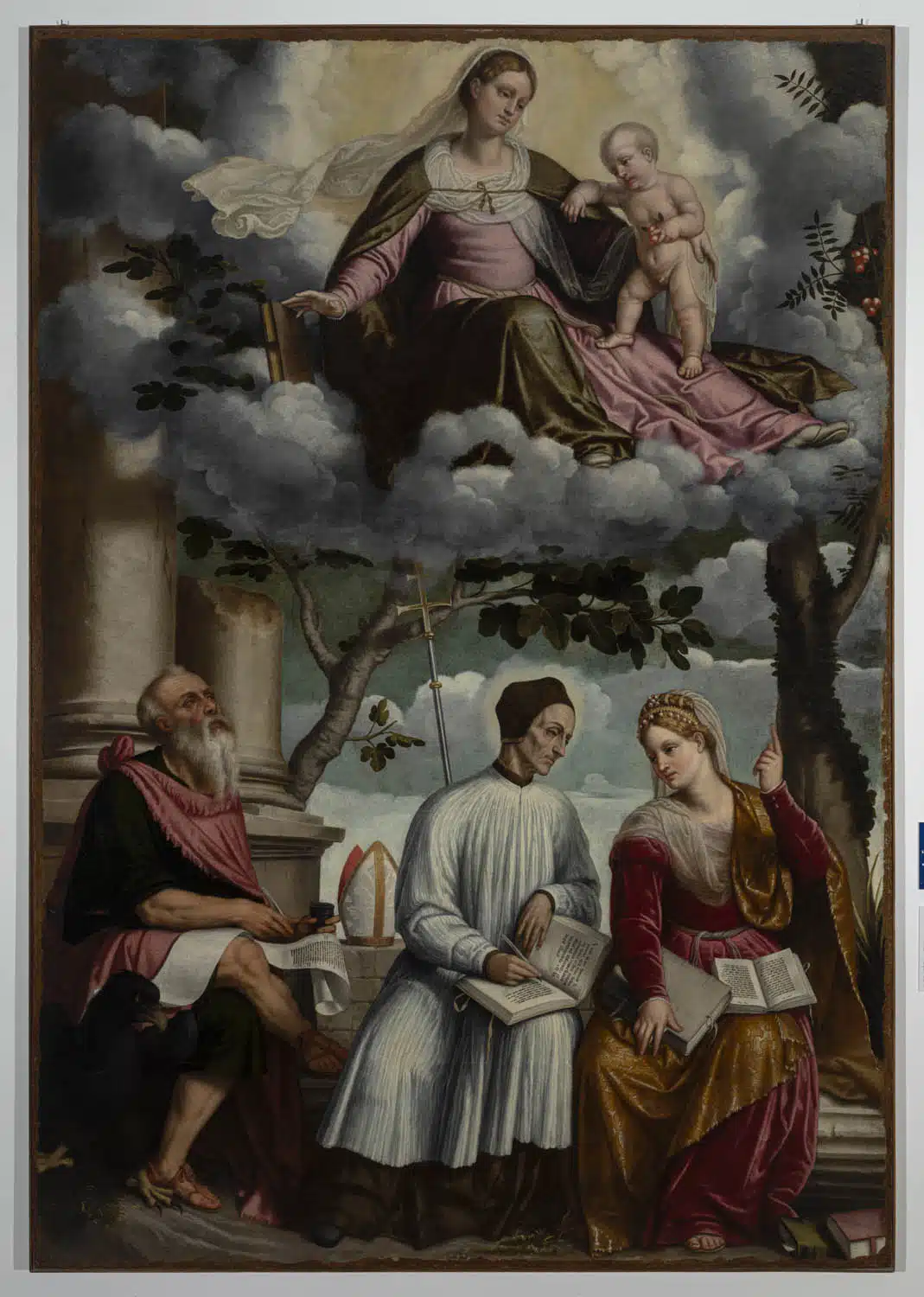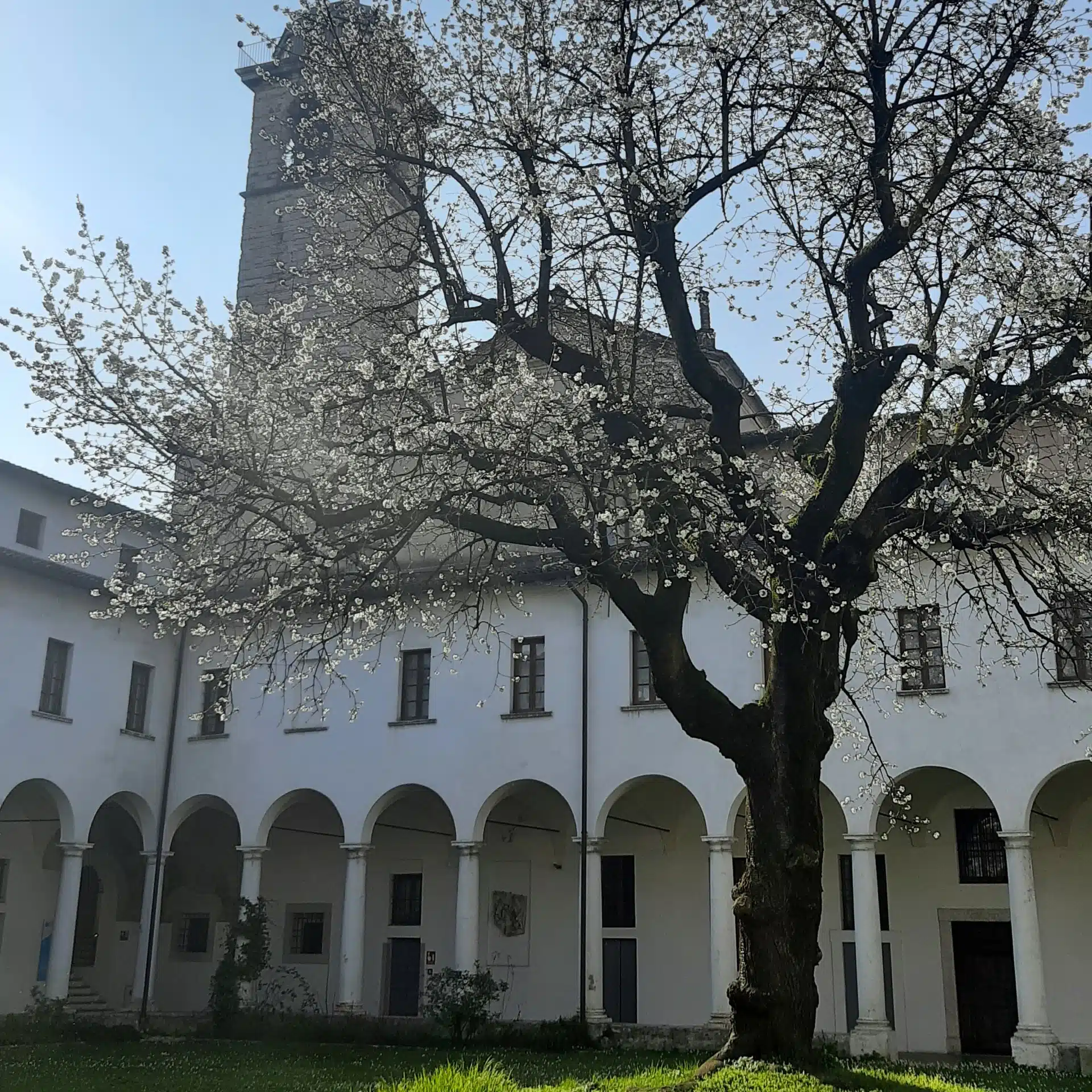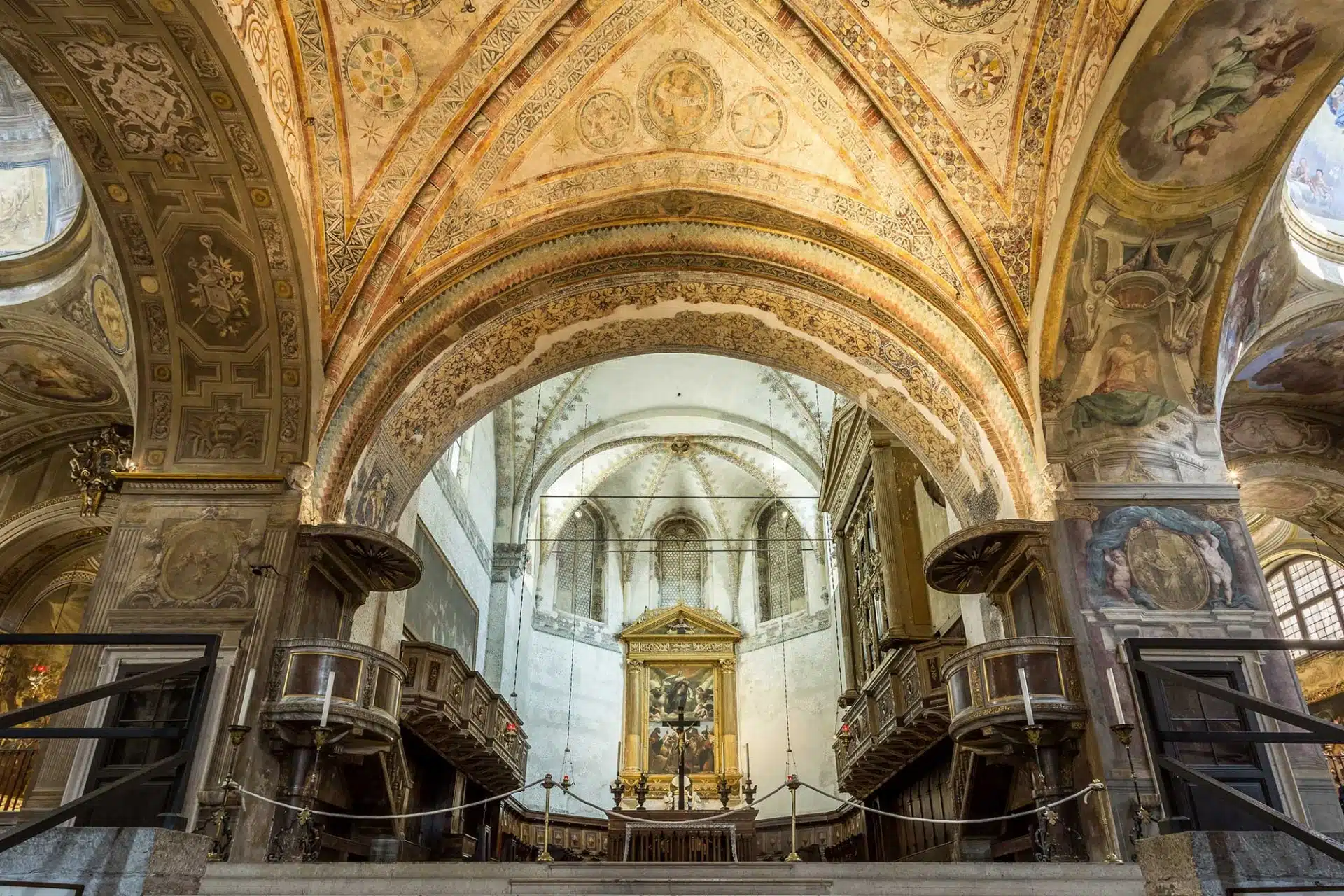Summa Theologica, Tommaso d’Aquino, voll. I-IV
Autore: Scuola bolognese (primo quarto del XIV secolo) Manoscritto membranaceo - 450x250 cm Provenienza: Brescia, Biblioteca Capitolare del Duomo -
I quattro volumi erano parte della biblioteca del modenese Giacomo degli Atti, vescovo di Brescia dal 1335 al 1344. Contengono la Summa Theologiae o Summa Theologica, la più famosa opera del teologo medievale San Tommaso d’Aquino.
Il primo a citare la loro esistenza fu il Padre Teatino Giovanni Giacomo Gradenigo nel suo elenco compilato nel 1755. Compaiono anche nell’elenco dei “Codici in Salvo” del 1797, cioè dei manoscritti destinati a restare nella Biblioteca Capitolare anche dopo il suo smembramento operato dalla Repubblica Cisalpina.
Gaetano Panazza fu il primo ad analizzare questi quattro volumi, nel 1964. Egli assegnò le miniature alla mano di un’artista di scuola emiliano-bolognese, informazione che coincide con l’origine emiliana del vescovo Giacomo degli Atti.
Il primo dei quattro volumi raccoglie la prima parte della Summa. Il secondo e il terzo contengono la seconda parte, divisa in due sezioni. Nel quarto volume si trova invece la terza parte dell’opera, lasciata incompiuta dall’autore.
Il testo inizia con la lettera Q di “Quia”, dipinta in rosa con profilature bianche su campo blu, mentre il bordo della pagina presenta una terminazione fogliata in blu e rosso vermiglio.
All’interno della lettera si trova il ritratto a mezza figura di San Tommaso d’Aquino. L’ignoto artista lo raffigura di tre quarti con il libro in mano, con un saldo modellato e un’attenzione precisa ai gesti e agli atteggiamenti. Lo stesso tipo di effigie si trova all’inizio del secondo volume.
Il San Tommaso degli altri due tomi ha la stessa saldezza plastica e gli stessi colori, ma si notano differenze fondamentali. La sua posa è ieratica, e si nota una maggior cura nella resa dell’incarnato e una particolare attenzione alla descrizione del volto. Nel terzo volume è anche ritratto con la barba, che gli dona un aspetto più solenne.
Anche le bordature fogliate sono molto diverse negli ultimi due libri. Hanno una strutturazione più complessa e i loro intrecci descrivono magnifici arabeschi. Inoltre, la presenza di germogli e boccioli nei fregi del quarto volume rendono la decorazione molto più elegante.
Fu sempre Gaetano Panazza a notare questa differenza. E la giustificò assegnando due mani diverse per i primi due volumi e per gli ultimi due. Entrambi sembrano, però, legati alla tradizione miniatoria sviluppatasi in Emilia e nella città di Bologna tra fine Duecento e i primi anni del Trecento.
Alcuni elementi, come le sfumature di colore dei bordi fogliati e il gioco chiaroscurale delle figure, potrebbero ispirarsi ad altre trattazioni più antiche, come quelle del cosiddetto Maestro di Gerona.











